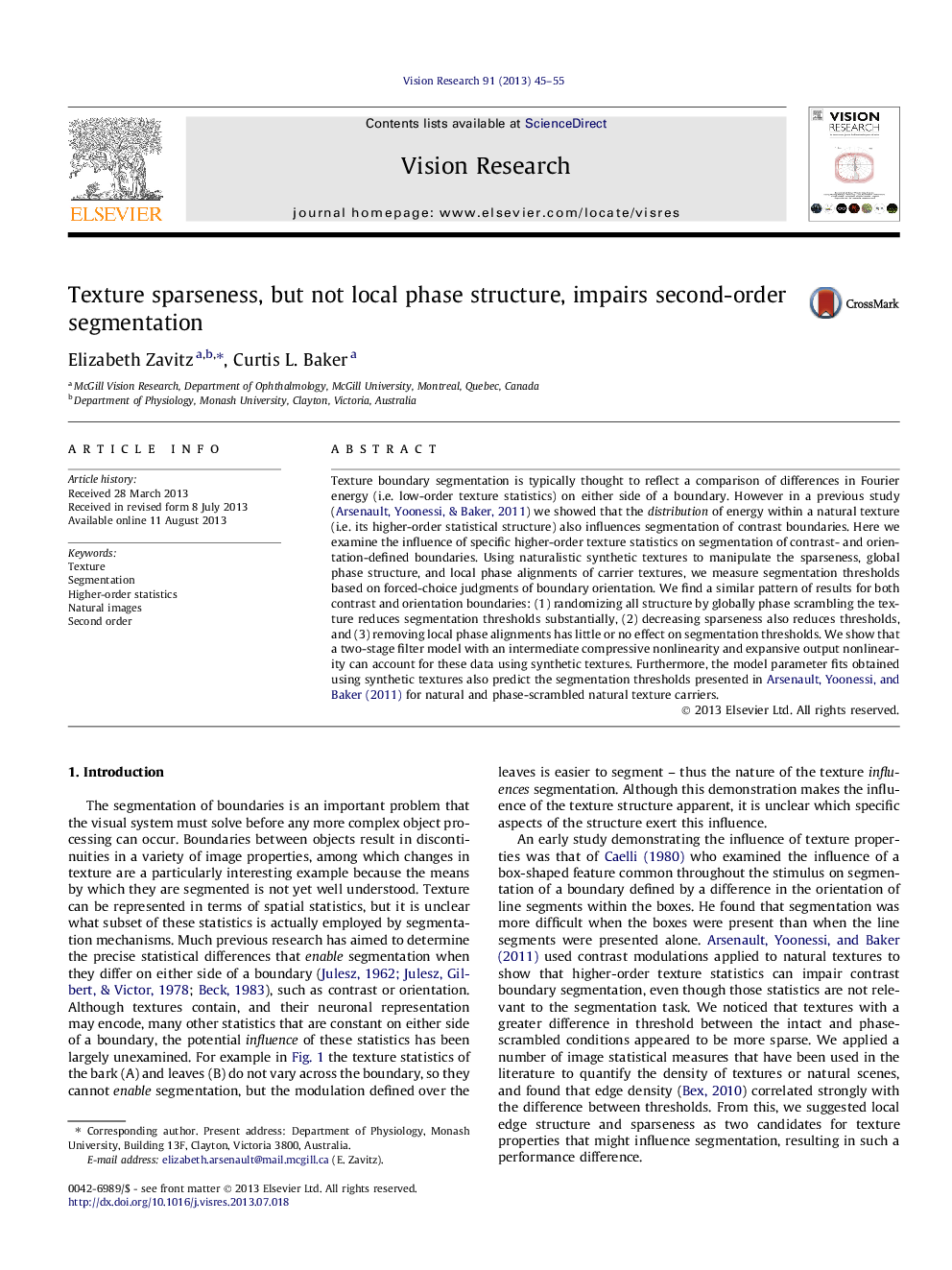| Article ID | Journal | Published Year | Pages | File Type |
|---|---|---|---|---|
| 4033745 | Vision Research | 2013 | 11 Pages |
•Novel synthetic textures are used to assess role of texture structure in segmentation.•Texture sparseness greatly affects psychophysical performance in segmentation.•FRF model best fits data with intermediate nonlinearity that is compressive.•Model fit with synthetic texture responses predicts performance for natural textures.
Texture boundary segmentation is typically thought to reflect a comparison of differences in Fourier energy (i.e. low-order texture statistics) on either side of a boundary. However in a previous study (Arsenault, Yoonessi, & Baker, 2011) we showed that the distribution of energy within a natural texture (i.e. its higher-order statistical structure) also influences segmentation of contrast boundaries. Here we examine the influence of specific higher-order texture statistics on segmentation of contrast- and orientation-defined boundaries. Using naturalistic synthetic textures to manipulate the sparseness, global phase structure, and local phase alignments of carrier textures, we measure segmentation thresholds based on forced-choice judgments of boundary orientation. We find a similar pattern of results for both contrast and orientation boundaries: (1) randomizing all structure by globally phase scrambling the texture reduces segmentation thresholds substantially, (2) decreasing sparseness also reduces thresholds, and (3) removing local phase alignments has little or no effect on segmentation thresholds. We show that a two-stage filter model with an intermediate compressive nonlinearity and expansive output nonlinearity can account for these data using synthetic textures. Furthermore, the model parameter fits obtained using synthetic textures also predict the segmentation thresholds presented in Arsenault, Yoonessi, and Baker (2011) for natural and phase-scrambled natural texture carriers.
